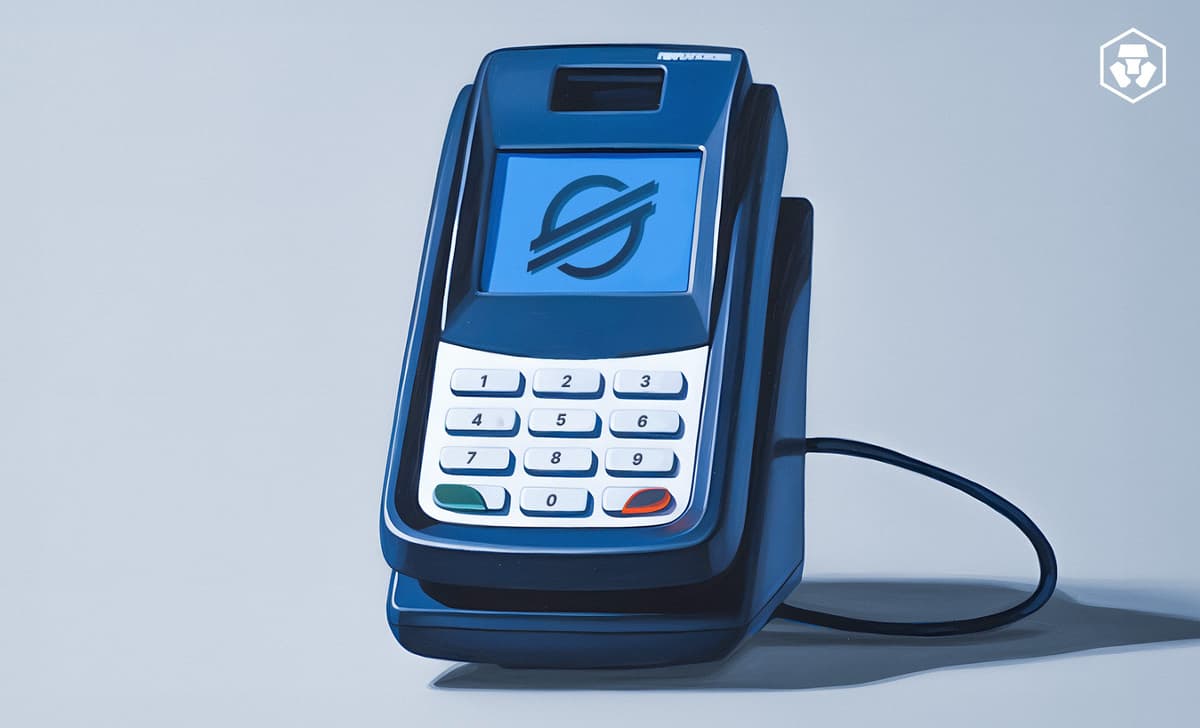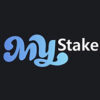Quote from
Heatman on October 29, 2023, 10:59 am
Founded in 2014, Stellar aims to seamlessly connect banks, payment systems, and users with its decentralised blockchain network for quick, low-cost, and cross-border transactions.
Key Takeaways:
Stellar is an open-source, decentralised blockchain network aimed at facilitating fast, low-cost, and cross-border transactions.
Founded by Jed McCaleb and Joyce Kim in 2014, Stellar’s mission is to seamlessly integrate banks, payment systems, and individuals on a global scale.
Stellar uses the Stellar Consensus Protocol (SCP) to achieve consensus, distinguishing itself from Bitcoin’s Proof of Work and Ethereum’s Proof of Stake mechanisms.
XLM is the native token of the Stellar network, enabling multicurrency transactions, providing liquidity, and allowing users to vote on network proposals.
The initial supply of XLM was 105 billion tokens, of which 55 billion were burned by the Stellar Development Foundation to signal a shift in direction.
An ‘anchor’ in the context of the Stellar network serves as a bridge between traditional financial (TradFi) systems and the Stellar blockchain, playing a crucial role in facilitating the exchange and transfer of assets between the TradFi world and the cryptocurrencies on the Stellar network.
What Is Stellar?
Stellar is a decentralised blockchain payment network with a compelling vision: to connect both traditional and decentralised payment systems onto one unified platform. Founded in 2014 by Jed McCaleb and Joyce Kim, Stellar was created to simplify the process of sending and receiving various currencies from around the world.
The ultimate goal of Stellar as a network is best described by the Stellar Development Foundation: “The way the global financial establishment is structured today, people are born into an economy just like they’re born into a political system. Stellar is a way out: it lets people participate in a worldwide, stable financial network regardless of where they live.” In 2015, Stellar introduced an upgraded protocol featuring a novel consensus algorithm known as the Stellar Consensus Protocol (SCP).
In addition to seamless cross-border payments, the Stellar network offers users a versatile platform for various financial activities. Users can leverage the network for trading assets and issuing tokens, expanding its utility beyond traditional payments. This flexibility makes Stellar a dynamic and inclusive solution for a wide range of financial needs.
How Does Stellar Work?
Unlike Bitcoin’s Proof of Work (PoW) and Ethereum’s Proof of Stake (PoS) consensus mechanisms, Stellar utilises the Stellar Consensus Protocol (SCP), which is a federated consensus mechanism that uses a system of trusted nodes to achieve consensus. Stellar is an open-source, decentralised protocol that people can use to transact and transfer cryptocurrency to fiat currency, making it faster and cheaper than traditional financial (TradFi) systems.
Stellar is an open-source, decentralised blockchain network aimed at facilitating fast, low-cost, and cross-border transactions.
Founded by Jed McCaleb and Joyce Kim in 2014, Stellar’s mission is to seamlessly integrate banks, payment systems, and individuals on a global scale.
Stellar uses the Stellar Consensus Protocol (SCP) to achieve consensus, distinguishing itself from Bitcoin’s Proof of Work and Ethereum’s Proof of Stake mechanisms.
XLM is the native token of the Stellar network, enabling multicurrency transactions, providing liquidity, and allowing users to vote on network proposals.
The initial supply of XLM was 105 billion tokens, of which 55 billion were burned by the Stellar Development Foundation to signal a shift in direction.
An ‘anchor’ in the context of the Stellar network serves as a bridge between traditional financial (TradFi) systems and the Stellar blockchain, playing a crucial role in facilitating the exchange and transfer of assets between the TradFi world and the cryptocurrencies on the Stellar network.
What Is Stellar?
Stellar is a decentralised blockchain payment network with a compelling vision: to connect both traditional and decentralised payment systems onto one unified platform. Founded in 2014 by Jed McCaleb and Joyce Kim, Stellar was created to simplify the process of sending and receiving various currencies from around the world.
The ultimate goal of Stellar as a network is best described by the Stellar Development Foundation: “The way the global financial establishment is structured today, people are born into an economy just like they’re born into a political system. Stellar is a way out: it lets people participate in a worldwide, stable financial network regardless of where they live.” In 2015, Stellar introduced an upgraded protocol featuring a novel consensus algorithm known as the Stellar Consensus Protocol (SCP).
In addition to seamless cross-border payments, the Stellar network offers users a versatile platform for various financial activities. Users can leverage the network for trading assets and issuing tokens, expanding its utility beyond traditional payments. This flexibility makes Stellar a dynamic and inclusive solution for a wide range of financial needs.
What Is the XLM Token?
XLM, also known as a ‘lumen’, is the native token of the Stellar network. It facilitates transactions on the Stellar blockchain, bridging the gap between banks, payment systems, and people — providing a cheap, quick, and easy-to-access platform.
Features and Utility of the XLM Token:
Network fees: XLM is required in order to pay for transaction fees on the Stellar network. The base fee is 100 stroops (1 stroop = .0000001 XLM).
Cross-border transactions: As the native token of the Stellar network, XLM serves as a bridge between multicurrency transactions that require a fee, paid in XLM.
Voting power: XLM holders can vote on certain network changes and choose the validators they trust in the SCP.
Minimum balance requirement: To create and maintain accounts on the Stellar network, a minimum balance of XLM is required. This helps authenticate accounts on the network while also preventing spam.
Liquidity: XLM provides liquidity to the Stellar decentralised exchange (DEX), where assets issued on the network can be traded.
Tokenomics of the XLM Token
Initially, XLM debuted with a pre-mined supply of 100 billion tokens, with an additional 5.4 billion generated due to the inflationary tokenomics mechanism.
Later, through a community proposal announced by Denelle Dixon, the CEO of the Stellar Development Foundation, 55 billion tokens were burned, which equates to more than half of the initial supply.
The current circulating supply of XLM (at the time of writing) is 28,058,817,226 tokens.
How to Trade the XLM Token
Stellar (XLM) is listed in the Crypto.com App, joining the growing list of 250-plus supported cryptocurrencies and stablecoins, including Bitcoin (BTC), Ethereum (ETH), Polkadot (DOT), USD Coin (USDC), and Cronos (CRO).
Crypto.com App users can now purchase XLM at true cost with USD, EUR, GBP, and 20-plus other fiat currencies and spend it at over 80 million merchants globally using the Crypto.com Visa Card. Alternatively, users can also trade XLM on the Crypto.com Exchange.
Conclusion
Stellar stands out as a transformative blockchain platform, driven by its commitment to seamlessly connect traditional financial systems with decentralised ones. With its unique consensus protocol and the integral role of the XLM token, Stellar continues to globally bridge the gap between banks, payment mechanisms, and people.
Founded in 2014, Stellar aims to seamlessly connect banks, payment systems, and users with its decentralised blockchain network for quick, low-cost, and cross-border transactions.
Key Takeaways:
Stellar is an open-source, decentralised blockchain network aimed at facilitating fast, low-cost, and cross-border transactions.
Founded by Jed McCaleb and Joyce Kim in 2014, Stellar’s mission is to seamlessly integrate banks, payment systems, and individuals on a global scale.
Stellar uses the Stellar Consensus Protocol (SCP) to achieve consensus, distinguishing itself from Bitcoin’s Proof of Work and Ethereum’s Proof of Stake mechanisms.
XLM is the native token of the Stellar network, enabling multicurrency transactions, providing liquidity, and allowing users to vote on network proposals.
The initial supply of XLM was 105 billion tokens, of which 55 billion were burned by the Stellar Development Foundation to signal a shift in direction.
An ‘anchor’ in the context of the Stellar network serves as a bridge between traditional financial (TradFi) systems and the Stellar blockchain, playing a crucial role in facilitating the exchange and transfer of assets between the TradFi world and the cryptocurrencies on the Stellar network.
What Is Stellar?
Stellar is a decentralised blockchain payment network with a compelling vision: to connect both traditional and decentralised payment systems onto one unified platform. Founded in 2014 by Jed McCaleb and Joyce Kim, Stellar was created to simplify the process of sending and receiving various currencies from around the world.
The ultimate goal of Stellar as a network is best described by the Stellar Development Foundation: “The way the global financial establishment is structured today, people are born into an economy just like they’re born into a political system. Stellar is a way out: it lets people participate in a worldwide, stable financial network regardless of where they live.” In 2015, Stellar introduced an upgraded protocol featuring a novel consensus algorithm known as the Stellar Consensus Protocol (SCP).
In addition to seamless cross-border payments, the Stellar network offers users a versatile platform for various financial activities. Users can leverage the network for trading assets and issuing tokens, expanding its utility beyond traditional payments. This flexibility makes Stellar a dynamic and inclusive solution for a wide range of financial needs.
How Does Stellar Work?
Unlike Bitcoin’s Proof of Work (PoW) and Ethereum’s Proof of Stake (PoS) consensus mechanisms, Stellar utilises the Stellar Consensus Protocol (SCP), which is a federated consensus mechanism that uses a system of trusted nodes to achieve consensus. Stellar is an open-source, decentralised protocol that people can use to transact and transfer cryptocurrency to fiat currency, making it faster and cheaper than traditional financial (TradFi) systems.
Stellar is an open-source, decentralised blockchain network aimed at facilitating fast, low-cost, and cross-border transactions.
Founded by Jed McCaleb and Joyce Kim in 2014, Stellar’s mission is to seamlessly integrate banks, payment systems, and individuals on a global scale.
Stellar uses the Stellar Consensus Protocol (SCP) to achieve consensus, distinguishing itself from Bitcoin’s Proof of Work and Ethereum’s Proof of Stake mechanisms.
XLM is the native token of the Stellar network, enabling multicurrency transactions, providing liquidity, and allowing users to vote on network proposals.
The initial supply of XLM was 105 billion tokens, of which 55 billion were burned by the Stellar Development Foundation to signal a shift in direction.
An ‘anchor’ in the context of the Stellar network serves as a bridge between traditional financial (TradFi) systems and the Stellar blockchain, playing a crucial role in facilitating the exchange and transfer of assets between the TradFi world and the cryptocurrencies on the Stellar network.
What Is Stellar?
Stellar is a decentralised blockchain payment network with a compelling vision: to connect both traditional and decentralised payment systems onto one unified platform. Founded in 2014 by Jed McCaleb and Joyce Kim, Stellar was created to simplify the process of sending and receiving various currencies from around the world.
The ultimate goal of Stellar as a network is best described by the Stellar Development Foundation: “The way the global financial establishment is structured today, people are born into an economy just like they’re born into a political system. Stellar is a way out: it lets people participate in a worldwide, stable financial network regardless of where they live.” In 2015, Stellar introduced an upgraded protocol featuring a novel consensus algorithm known as the Stellar Consensus Protocol (SCP).
In addition to seamless cross-border payments, the Stellar network offers users a versatile platform for various financial activities. Users can leverage the network for trading assets and issuing tokens, expanding its utility beyond traditional payments. This flexibility makes Stellar a dynamic and inclusive solution for a wide range of financial needs.
What Is the XLM Token?
XLM, also known as a ‘lumen’, is the native token of the Stellar network. It facilitates transactions on the Stellar blockchain, bridging the gap between banks, payment systems, and people — providing a cheap, quick, and easy-to-access platform.
Features and Utility of the XLM Token:
Network fees: XLM is required in order to pay for transaction fees on the Stellar network. The base fee is 100 stroops (1 stroop = .0000001 XLM).
Cross-border transactions: As the native token of the Stellar network, XLM serves as a bridge between multicurrency transactions that require a fee, paid in XLM.
Voting power: XLM holders can vote on certain network changes and choose the validators they trust in the SCP.
Minimum balance requirement: To create and maintain accounts on the Stellar network, a minimum balance of XLM is required. This helps authenticate accounts on the network while also preventing spam.
Liquidity: XLM provides liquidity to the Stellar decentralised exchange (DEX), where assets issued on the network can be traded.
Tokenomics of the XLM Token
Initially, XLM debuted with a pre-mined supply of 100 billion tokens, with an additional 5.4 billion generated due to the inflationary tokenomics mechanism.
Later, through a community proposal announced by Denelle Dixon, the CEO of the Stellar Development Foundation, 55 billion tokens were burned, which equates to more than half of the initial supply.
The current circulating supply of XLM (at the time of writing) is 28,058,817,226 tokens.
How to Trade the XLM Token
Stellar (XLM) is listed in the Crypto.com App, joining the growing list of 250-plus supported cryptocurrencies and stablecoins, including Bitcoin (BTC), Ethereum (ETH), Polkadot (DOT), USD Coin (USDC), and Cronos (CRO).
Crypto.com App users can now purchase XLM at true cost with USD, EUR, GBP, and 20-plus other fiat currencies and spend it at over 80 million merchants globally using the Crypto.com Visa Card. Alternatively, users can also trade XLM on the Crypto.com Exchange.
Conclusion
Stellar stands out as a transformative blockchain platform, driven by its commitment to seamlessly connect traditional financial systems with decentralised ones. With its unique consensus protocol and the integral role of the XLM token, Stellar continues to globally bridge the gap between banks, payment mechanisms, and people.
Uploaded files:








